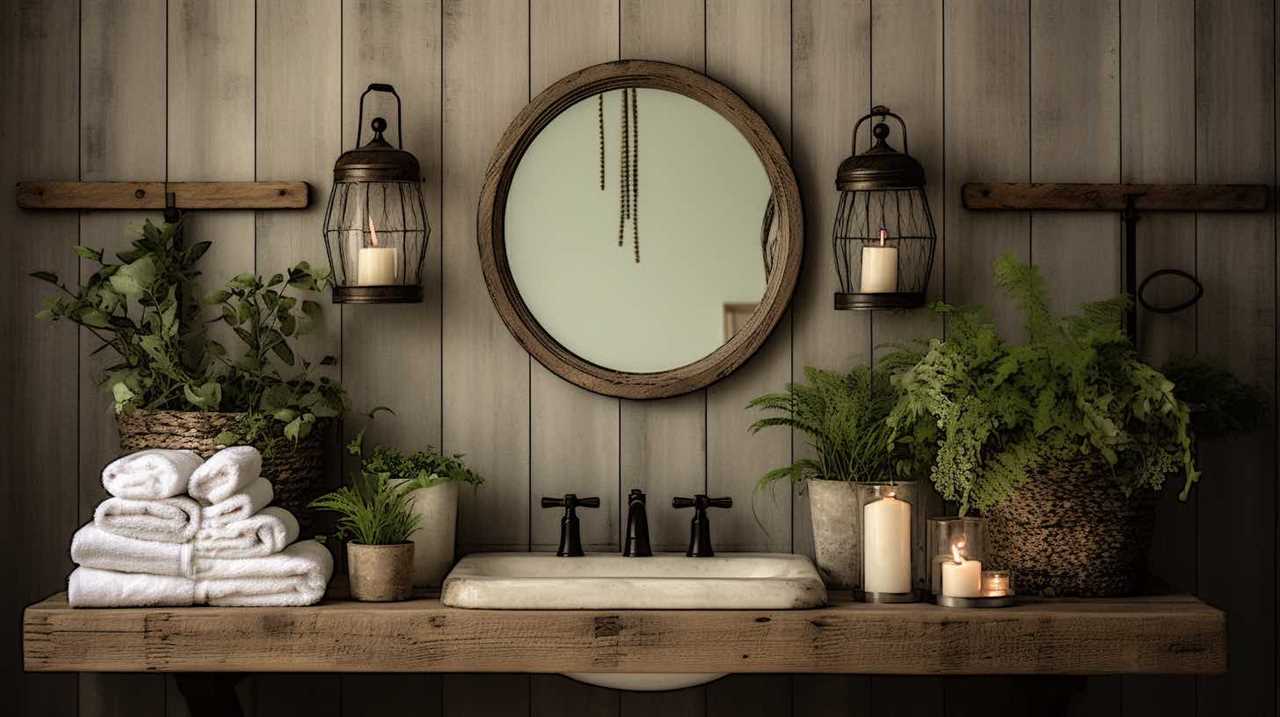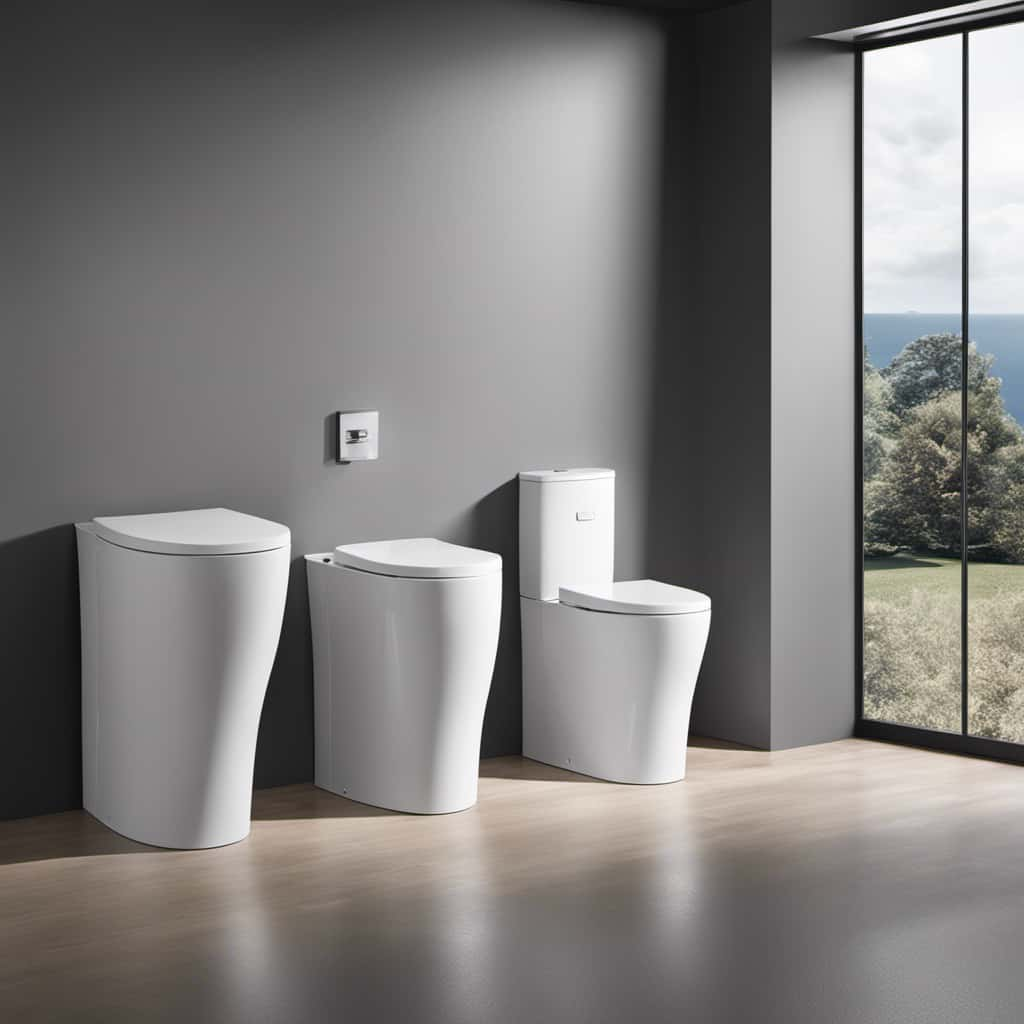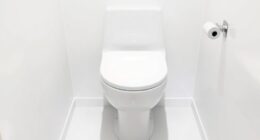We have all experienced the frustration of dealing with old bathroom fixtures that are no longer functional. However, there is no need to worry because we are going to demonstrate how to expertly install a new bathroom faucet.
In this step-by-step guide, we’ll walk you through the process of shutting off the water supply, removing the old faucet, and installing the shiny new one.
Get ready to impress with your newfound mastery of bathroom upgrades!
Key Takeaways
- Shut off the water supply before removing or installing a bathroom faucet to prevent water damage and ensure safety.
- Use the necessary tools and preparation techniques such as plumber’s tape, adjustable wrench, and basin wrench to successfully install a bathroom faucet.
- Test for leaks and proper water flow after installing a new faucet to ensure its functionality and prevent any future issues.
- Regular maintenance and troubleshooting are crucial for bathroom faucets to prevent common problems like dripping, low water pressure, and rust or mineral buildup.
Tools Needed
To install a bathroom faucet, we’ll need a few essential tools. Proper faucet maintenance is crucial to ensure its longevity and functionality. Before beginning the installation process, it’s important to familiarize ourselves with the different types of bathroom faucets available. The most common types include single-handle, two-handle, and wall-mounted faucets. Each type requires specific tools for installation.

Here is a step-by-step guide on the tools needed:
- Adjustable wrench: This tool is essential for tightening and loosening nuts and bolts.
- Screwdriver: A Phillips or flathead screwdriver will be required to remove any screws during the installation process.
- Plumber’s tape: This tape helps create a watertight seal between different parts of the faucet.
- Basin wrench: This tool is specifically designed to reach and tighten nuts in hard-to-reach places.
Shut Off the Water Supply
Before proceeding with the installation process, we need to shut off the water supply using the appropriate shut-off valve. This step is crucial to ensure a safe and smooth installation. Here are the steps to follow:
- Locate the shut-off valve: The shut-off valve is usually located under the sink or near the water meter. It’s a small valve that controls the flow of water to the faucet.
- Turn off the valve: Use a wrench or pliers to turn the valve clockwise until it’s fully closed. This will stop the water supply to the faucet.
- Test the water supply: Turn on the faucet to check if the water supply has been successfully shut off. If no water comes out, you have successfully shut off the supply.
- Importance of regular maintenance: Shutting off the water supply during faucet installation is essential to prevent any water damage or leaks. It also allows for regular maintenance and repair of the faucet, which can help prevent common problems such as dripping or low water pressure.
Remove the Old Faucet
Now, let’s tackle the task of removing the old faucet. This step is crucial to make way for the new faucet installation. Here is a step-by-step guide on how to remove the old faucet:
- Turn off the water supply: Before starting the removal process, ensure that the water supply is shut off. This step prevents any accidental leaks or damage.
- Gather the necessary tools: You’ll need a basin wrench, adjustable wrench, and plumber’s tape for this task.
- Disconnect the water supply lines: Use the basin wrench to loosen the nuts connecting the water supply lines to the faucet. Once loose, carefully remove the lines.
- Remove the mounting nuts: Locate the mounting nuts underneath the sink and use an adjustable wrench to loosen and remove them.
- Lift and remove the old faucet: With the mounting nuts removed, carefully lift the old faucet and set it aside.
Proper disposal of the old faucet is essential. You can check with your local recycling center or waste management facility for instructions on how to dispose of it responsibly.

Common problems encountered when removing an old faucet include rusted or corroded parts, stubborn mounting nuts, and hidden screws. If you encounter any of these issues, consider using penetrating oil or seeking professional assistance to ensure a successful removal process.
Install the New Faucet
Once the old faucet has been successfully removed, we can now proceed with installing the new faucet. Proper maintenance and choosing the right faucet are essential for a successful installation. Follow these steps to ensure a smooth process:
- Prepare the area: Clean the sink surface and remove any debris or old sealant.
- Position the new faucet: Place the faucet in the desired position on the sink, aligning it with the pre-drilled holes.
- Secure the faucet: Use the provided nuts and washers to secure the faucet to the sink. Tighten them evenly to prevent leaks.
- Connect the water supply: Attach the water supply lines to the faucet fittings, making sure to use plumber’s tape to prevent leaks. Turn on the water supply to check for any leaks and make necessary adjustments.
Test and Inspect the Installation
To ensure the successful installation of the new bathroom faucet, we will now proceed to test and inspect the installation. This step is crucial in identifying any issues and ensuring that the faucet is functioning properly. Here are the steps to follow:
- Turn on the water supply: Slowly turn on the water supply valves and check for any leaks or drips around the faucet connections. If you notice any leaks, tighten the connections or replace the faulty parts.
- Check for proper water flow: Turn on the faucet and check if the water flows smoothly without any splashing or uneven pressure. If there are any issues, it might indicate a clogged aerator or faulty valve.
- Test the hot and cold water controls: Turn the handles to the hot and cold positions and check if the water temperature changes accordingly. If there is no change or the temperature is inconsistent, there might be a problem with the cartridge or valve.
In addition to testing the installation, it is important to troubleshoot common faucet installation issues and learn how to properly maintain and clean bathroom faucets. Refer to the table below for some common issues and their solutions:

| Common Issues | Troubleshooting Tips |
|---|---|
| Leaking faucet | Check for loose connections or worn-out seals. |
| Low water pressure | Clean or replace the aerator to remove any debris. |
| Dripping faucet | Replace the cartridge or valve to fix the issue. |
| Rust or mineral buildup | Use a vinegar solution to remove the buildup from the faucet. |
| Stiff or difficult handle operation | Lubricate the handle or replace the cartridge if necessary. |
| Corroded or damaged faucet parts | Replace the damaged parts to restore functionality. |
Frequently Asked Questions
How Do I Choose the Right Bathroom Faucet for My Sink?
When choosing a bathroom faucet, we consider various factors such as style and functionality. The right faucet should complement the sink and meet your needs. Let’s explore bathroom faucet styles and what to consider when choosing one.
Can I Install a Bathroom Faucet Myself or Do I Need to Hire a Professional?
Installing a bathroom faucet can be a DIY project! We don’t need to hire a professional. We’ll guide you through step-by-step, making it easy to install the faucet yourself and save some bucks.
What Should I Do if I Encounter Any Leaks After Installing the New Faucet?
If you encounter any leaks after installing the new faucet, don’t worry. We can easily troubleshoot and fix faucet leaks. First, check the connections and tighten any loose parts. If the problem persists, consider replacing the faulty components.
Are There Any Specific Safety Precautions I Need to Take While Installing a Bathroom Faucet?
When installing a bathroom faucet, it’s important to prioritize safety precautions. Take care to turn off the water supply, use proper tools, and follow installation instructions step-by-step for a successful and accident-free project.

How Often Should I Replace My Bathroom Faucet?
When it comes to the lifespan of a bathroom faucet, it’s important to keep an eye out for signs of wear and tear. Depending on usage and quality, replacing a worn out faucet may be necessary every 10-20 years.
Conclusion
In conclusion, installing a bathroom faucet is a simple and straightforward process that can be easily completed by following the step-by-step instructions provided.
However, it’s important to note that a study conducted by the Environmental Protection Agency found that fixing leaks in household plumbing fixtures, such as faucets, can save homeowners about 10% on their water bills.
So not only will installing a new faucet improve the aesthetics of your bathroom, but it can also help you save money in the long run.











